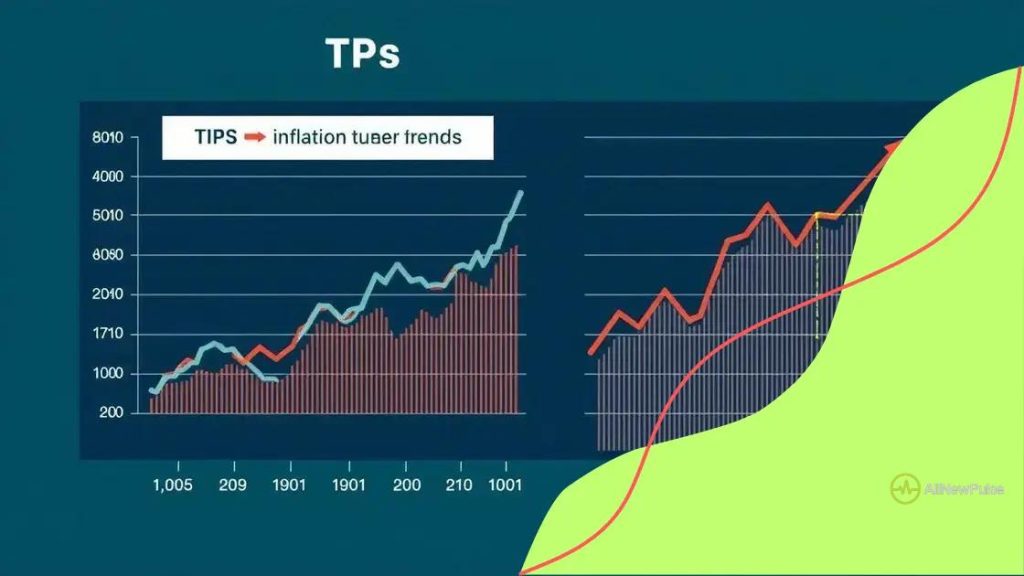Inflation-protected securities (TIPS) analysis: what to know

Inflation-protected securities (TIPS) are government bonds that adjust their principal value based on inflation, providing investors with a reliable income stream while safeguarding their purchasing power.
Inflation-protected securities (TIPS) represent a unique investment option for those concerned about rising inflation. These government-issued bonds adjust their principal based on changes in the Consumer Price Index, providing a hedge against inflation. Curious about how TIPS can fit into your investment strategy? Let’s dive in!
Understanding inflation-protected securities
Understanding inflation-protected securities is essential for investors looking to safeguard their assets against inflation. These unique securities adjust their value according to the fluctuations in the Consumer Price Index, making them a vital tool in today’s economic environment.
At their core, inflation-protected securities (TIPS) are issued by the U.S. government. They offer a fixed interest rate, but the principal amount increases with inflation.
Key features of TIPS
Investors should be aware of the main attributes associated with TIPS:
- Principal adjustment: The principal amount rises with inflation.
- Fixed interest rate: The interest rate remains constant but is applied to the adjusted principal.
- Protection against deflation: If inflation decreases, the principal isn’t reduced below face value.
Investing in TIPS can be particularly advantageous during periods of rising inflation. Many investors view them as a safe haven, ensuring that their returns maintain purchasing power. Since TIPS are backed by the government, they carry low credit risk, making them appealing even to conservative investors.
Another benefit of TIPS is the way they are taxed. The interest payments you receive and the inflation adjustments to the principal are subject to federal income tax, but they are exempt from state and local taxes, enhancing net returns.
Who should consider TIPS?
Investors who anticipate inflation or seek to diversify their portfolios may find TIPS particularly valuable. They cater to those who are risk-averse or want to achieve a balanced investment strategy. When economic uncertainty looms, TIPS can help maintain financial stability.
In conclusion, understanding how to integrate inflation-protected securities into your investment strategy is crucial. With their unique features and benefits, TIPS can provide a solid foundation in a well-rounded portfolio. By keeping pace with inflation, they offer reassurance to investors looking to preserve their wealth over time.
How TIPS work in an investment portfolio
Understanding how TIPS work in an investment portfolio is essential for any investor aiming to hedge against inflation. These investment tools can provide stability and help maintain purchasing power over time. By adjusting their principal value based on inflation, TIPS can offer unique benefits in various market conditions.
When you invest in TIPS, the principal amount increases with inflation, which means your overall investment grows. This growth occurs because the principal is adjusted according to the Consumer Price Index.
The mechanics of TIPS
Investors receive interest payments based on the inflation-adjusted principal. This means:
- Consistent income: You receive regular interest payments that can shield you from inflation.
- Inflation-adjusted returns: As inflation rises, both your principal and interest payments increase.
- Low risk: Being backed by the U.S. government, TIPS have a low risk of default.
Incorporating TIPS into your portfolio can enhance its resilience. For example, during economic downturns or periods of high inflation, TIPS can offer a buffer. This is particularly relevant for retirees or those relying on fixed income, as TIPS can help shield their savings from inflationary pressures.
Moreover, TIPS can complement other assets in your portfolio. They often perform differently than stocks and bonds, potentially reducing overall risk. By including TIPS in your strategy, you can achieve greater diversification, making your investments more robust against market fluctuations.
Best practices for investing in TIPS
When adding TIPS to your investment portfolio, consider the following tips:
- Assess your needs: Determine if inflation protection fits your investment goals.
- Diversify: Pair TIPS with other investment vehicles for a balanced approach.
- Stay informed: Keep an eye on inflation rates and market conditions that affect TIPS.
By understanding how TIPS work and their role in an overall investment strategy, you can make informed decisions. They offer a sustainable way to navigate inflation while securing your financial future.
Comparative analysis with other securities

A comparative analysis with other securities is vital for understanding where TIPS fit within an investment strategy. Examining how TIPS perform alongside stocks, bonds, and other investment options can help investors make informed decisions.
TIPS differ significantly from traditional bonds. While traditional bonds provide fixed interest rates, TIPS have their principal value adjusted according to inflation, making them an appealing option in times of rising prices.
Comparison with traditional bonds
Here are some key differences between TIPS and traditional bonds:
- Inflation protection: TIPS offer a safeguard against inflation, whereas traditional bonds do not.
- Interest payments: Interest on TIPS is paid on the adjusted principal, providing higher payments during inflation.
- Risk of loss: Traditional bonds risk losing value during inflation, while TIPS maintain purchasing power.
Moreover, comparing TIPS to stocks illustrates further distinctions. Although stocks can provide higher returns, they also come with higher risks. The performance of stocks varies with market conditions, making them less predictable compared to the steady returns of TIPS.
Performance in different market conditions
Understanding how TIPS stack up in different environments is crucial. For instance, in a low-interest-rate environment, TIPS can outperform traditional bonds because their inflation adjustment helps maintain positive returns. Conversely, when interest rates rise, traditional bonds may offer better yields, but they lose value during inflation.
Moreover, during economic downturns, investors often seek safer assets. TIPS can help mitigate losses, as they won’t lose value like stocks, offering a more stable investment. They are especially valuable in uncertain times when inflation is unpredictable.
Investors should also consider diversifying by holding a mix of securities, including TIPS, to balance risks and rewards. A diversified portfolio can benefit from the strengths of each asset class, combining the stability of TIPS with the growth potential of stocks.
Investment strategies using TIPS
Implementing investment strategies using TIPS can enhance your portfolio’s resilience against inflation. These securities offer a unique feature: they adjust in value based on inflation, making them a smart choice for risk-averse investors.
One effective strategy is to use TIPS as a core holding in a diversified portfolio. By including them, you can protect against inflation while balancing the risk of more volatile assets like stocks.
Building a diversified portfolio
Diversifying your investments is crucial. Here are some considerations:
- Mix of asset classes: Incorporate stocks, bonds, and TIPS to balance risk and reward.
- Over time horizons: Align TIPS investments with your long-term financial goals.
- Market conditions: Adjust allocations based on existing economic indicators.
Incorporating TIPS into your strategy requires monitoring inflation trends. Tracking economic data helps determine when to adjust the weight of TIPS in your portfolio. Rising inflation might prompt you to increase your investment in TIPS to safeguard your returns.
Targeting retirement accounts
Investing in TIPS is especially beneficial within retirement accounts. This approach allows you to minimize taxes since TIPS interest payments are subject to federal taxes but exempt from state and local taxes.
Furthermore, as you approach retirement, utilizing TIPS can be a way to secure steady income. They provide interest payments while helping maintain your portfolio’s purchasing power. It’s essential for retirees to have a plan that considers inflation to protect their savings.
For those seeking a more aggressive strategy, combining TIPS with other income-producing assets can create a balanced risk profile. This strategy allows you to enjoy the benefits of higher returns while retaining the inflation protection that TIPS offer.
Evaluating risks and returns of TIPS
Evaluating the risks and returns of TIPS is crucial for investors aiming to make informed decisions about their portfolios. These securities provide unique features that serve as both opportunities and potential pitfalls.
On the return side, TIPS offer a way to protect your investment against inflation. When inflation rises, the principal value of TIPS increases. This adjustment leads to higher interest payments. As a result, TIPS can maintain purchasing power in challenging economic environments.
Understanding potential risks
However, investing in TIPS is not without risks. Here are key considerations:
- Interest rate risk: When interest rates rise, the market value of existing TIPS may fall.
- Inflation risk: If inflation is lower than expected, returns could be less than other fixed-income securities.
- Tax implications: Although TIPS provide inflation protection, interest payments are taxable at the federal level, which can affect overall returns.
One risk that investors often overlook is the impact of deflation. If the economy experiences deflation, the principal value of TIPS may decrease, but it cannot fall below the original face value. This protects investors from total loss but limits potential returns in declining markets.
Assessing returns
To truly evaluate TIPS, consider their performance compared to other options. While TIPS adjust for inflation, traditional bonds may offer higher yields during stable inflation periods. Comparing TIPS to equities can show a different risk-return profile—equities typically have higher returns but come with greater volatility.
Investors should also analyze their time horizon. For those focused on long-term investments, TIPS can provide a reliable way to grow assets while hedging against inflation, especially in retirement accounts. Regularly reviewing performance, along with economic indicators, can lead to better investment choices.
By understanding both the risks and returns associated with TIPS, investors can make well-informed decisions that align with their financial goals. This strategic approach can help maximize benefits while mitigating potential downsides.
FAQ – Frequently Asked Questions about Inflation-Protected Securities (TIPS)
What are inflation-protected securities (TIPS)?
TIPS are government-issued bonds designed to protect investors from inflation by adjusting their principal value based on the Consumer Price Index.
How do TIPS work in an investment portfolio?
TIPS provide a reliable income stream while protecting against inflation, making them a valuable component in a diversified investment strategy.
What are the risks associated with investing in TIPS?
Risks include interest rate risk, inflation risk, and potential tax implications on the interest earned.
Can TIPS be a good investment for retirement planning?
Yes, TIPS can help preserve purchasing power in retirement accounts, providing a steady income and inflation protection.





